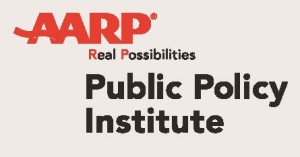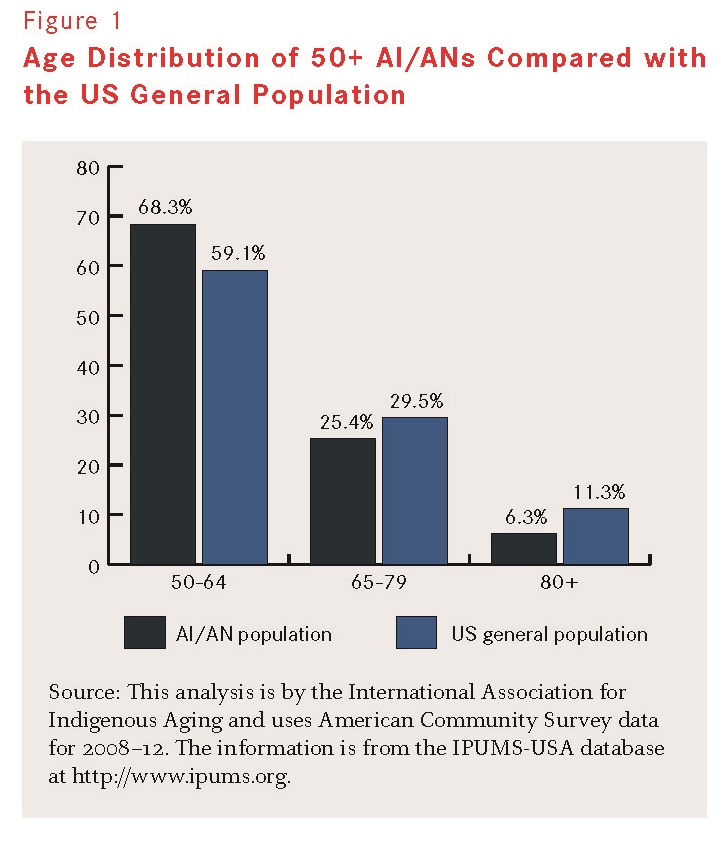AARP – IA2 Report on Native Elders
 In partnership with the AARP Public Policy Institute, IA2 worked with a team of aarpppilogo
In partnership with the AARP Public Policy Institute, IA2 worked with a team of aarpppilogo
researchers, including board member Dr. R. Turner Goins from Western Carolina University and Dr. Marc Schure from Montana State University to conduct an analysis of selected information using the U.S. Census Bureau’s American Community Survey (ACS) data.
Click here to read the full report (pdf)
Click here to access the In-Brief
Lifelong Disparities among Older American Indians and Alaska Natives
 Older American Indians and Alaska Natives (AI/ANs) constitute a population that will grow substantially over the next 30 years. Such growth follows an increase over the previous decade that is nearly three times more than other races. Numbers of AI/ANs ages 65 and over will triple, and the oldest cohort (ages 85 and over) is projected to increase more than sevenfold by 2050. The socioeconomic and health cover- age disparities that have historically characterized their lives remain, to a large extent, unresolved. This report outlines the demographics of this growing cohort and concludes with recommendations for coordinating programmatic resources to better serve it.
Older American Indians and Alaska Natives (AI/ANs) constitute a population that will grow substantially over the next 30 years. Such growth follows an increase over the previous decade that is nearly three times more than other races. Numbers of AI/ANs ages 65 and over will triple, and the oldest cohort (ages 85 and over) is projected to increase more than sevenfold by 2050. The socioeconomic and health cover- age disparities that have historically characterized their lives remain, to a large extent, unresolved. This report outlines the demographics of this growing cohort and concludes with recommendations for coordinating programmatic resources to better serve it.
Introduction
 More than 5.2 million people in the United States are American Indian or Alaska Native (AI/ AN), either alone or in combination with one or more other races. From 2000 to 2010, the AI/AN population grew 27 percent, increasing nearly three times faster than did the total population. The number of AI/ANs ages 65 and older is projected to more than triple from 464,000 in 2012 to 1,624,000 in 2050. The number of AI/ANs 85 years of age and older is projected to increase from 42,000 in 2012 to 300,000 in 2050 more than seven-fold increase.
More than 5.2 million people in the United States are American Indian or Alaska Native (AI/ AN), either alone or in combination with one or more other races. From 2000 to 2010, the AI/AN population grew 27 percent, increasing nearly three times faster than did the total population. The number of AI/ANs ages 65 and older is projected to more than triple from 464,000 in 2012 to 1,624,000 in 2050. The number of AI/ANs 85 years of age and older is projected to increase from 42,000 in 2012 to 300,000 in 2050 more than seven-fold increase.
This report uses American Community Survey (ACS) data from the US Census to provide a national overview Race Breakdown from AARP AIAN Report_20151117-2of demographic and social characteristics of those AI/ANs ages 50 years or older. Population-based data contribute to informing policy, establishing funding priorities, and antic- ipating service needs. Although information is available about the AI/AN population as a whole, relatively little is known about older AI/ANs.
This report uses ACS estimates of those who identify their race as AI/AN alone or in combination with one or more races.4 Researchers note variations in demographic and social characteristics between those who report their race as AI/AN alone and those who report as AI/AN combined with other races. American Indians who
identify as AI/AN alone and who live on or near reservations have been found to experience the greatest socioeconomic disparities within the AI/AN population.
